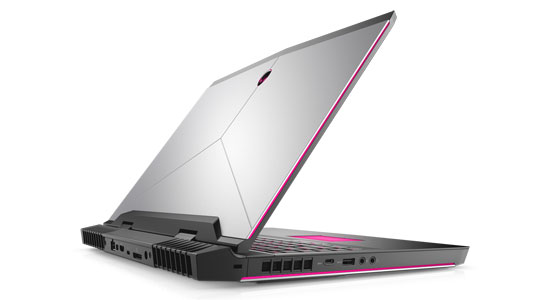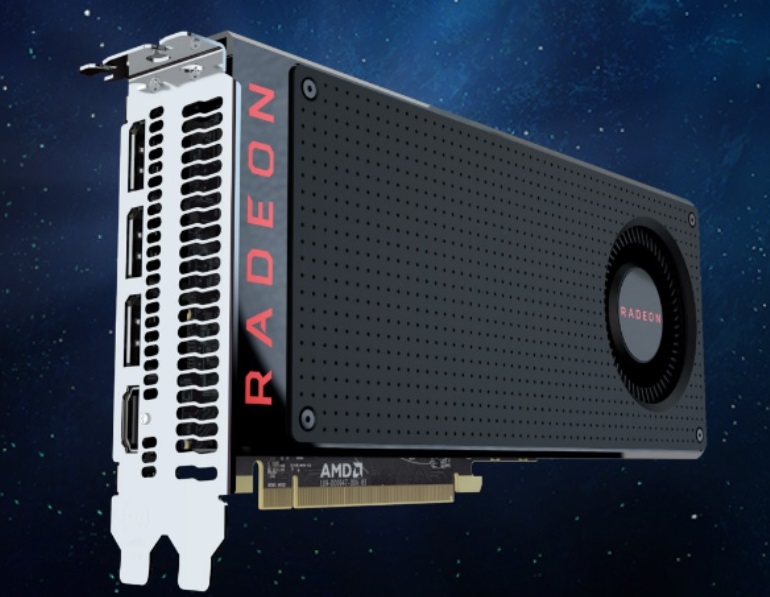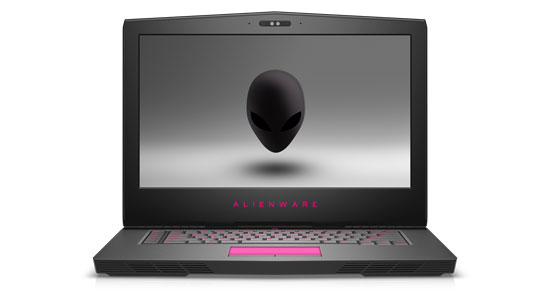Alienware’s Latest Gaming Laptops Feature New AMD Radeon RX 470 GPU Options
Alienware dropped a bombshell at PAX West when it revealed its new Alienware 13, 15 and 17 notebooks. The expected upgrade to Nvidia’s 10-series mobile GPUs came as no surprise, but jaws hit the floor when the company revealed that desktop-class AMD Radeon RX 470 GPUs would also be an option for the new gaming laptops.
AMD Returns To The Mobile Gaming Fray
It would be fair to say that AMD hasn’t been a relevant force in the mobile gaming market for some time; Nvidia has dominated the segment for the last few years. However, the new mobile Radeon RX 470 seeks to change that. The Polaris GPU features the same technical specs as the desktop card: 2,048 stream processors with a base clock of 926 MHz and a boost of 1,206 MHz, 32 ROPs and CUs and 128 texture units. The 8 GB of GDDR5 memory has a frequency of 6.6 Gbps on a 256-bit bus for a total memory bandwidth of 211 GB/s. It operates with a 120-watt TDP, and if the newly-designed cooling system inside the Alienware 15 and 17 can keep it from throttling, it should ostensibly net the same performance as its desktop counterpart.
Concerning the actual form factor of the RX 470 inside the new Alienware 17 and 15, AMD's Jason Evangelho, Sr. Technical Marketing Specialist for the Radeon Technology Group at AMD, made a somewhat suspect statement in a blog post:
"This isn’t a mobile variant; this is the full-powered RX 470 featuring our latest Polaris GPU architecture."
Furthermore, the accompanying photo of a full-sized RX 470 implies that this is not a GPU with a mobile form factor, and we reached out to AMD for clarification. The company explained that the GPU is "chip down," which means it is soldered directly to the motherboard and routed through PCIe (as most laptop discrete graphics options are). The GPU is the exact same chip found inside the desktop counterpart (similar to Nvidia's 10-series mobile GPUs), but it's inside a laptop. We're fairly certain that makes it a mobile variant, despite the marketing spin. After all, the GPU is in a mobile device, and it's certainly not a full-sized PCIe 3.0 x16 graphics card crammed into a notebook PC.
Alienware 17, 15, 13: New And Improved
The new Alienware 17 features up to an Intel Core i7-6820HK unlocked quad-core processor, 32 GB of DDR4-2666, a 1 TB PCIe SSD and 3 TB HDD. Graphics options include the previously-mentioned AMD Radeon RX 470, in addition to the entire gamut of new Pascal-based Nvidia mobile GPUs (although the GTX 1080 option doesn’t arrive until November). The new Nvidia GPU options make these the first Alienware laptops that are VR ready. Alienware also integrated Tobii eye-tracking technology into the chassis.
The new Alienware 15 takes a step down with CPU power (it can be equipped with Intel Core i5 processors), but otherwise, it gets the same hardware options as the Alienware 17, sans the GTX 1080 and Tobii eye tracking.
Get Tom's Hardware's best news and in-depth reviews, straight to your inbox.
The company expects the new Alienware 13 to arrive this November, but full specifications aren’t yet available. However, Alienware said it’s been slimmed down even further with a new design, and that it sports an OLED display with a 1ms response time in addition to Nvidia 10-series GPUs. Pricing for the new Alienware gaming laptops isn’t available yet, but we should see the Alienware 15 and 17 up and ready to order on the company’s website by the end of the month.
More To Come From AMD?
After the initial shock of AMD’s announcement had worn off, we pondered what else could be up the company’s sleeve. Although we’re pleased to see the Red Team taking renewed strides in the mobile gaming business, we’re hoping that this isn’t a one-off and that we’ll see more desktop-class GPUs from AMD in other vendors’ notebooks the future. It's also somewhat disappointing that the new mobile AMD desktop-class GPU isn't VR ready, but perhaps a mobile version of the RX 480 is on the way, and AMD can become a contender in the VR-ready laptop segment.
| GPU | AMD Radeon RX 470 |
|---|---|
| Compute Units | 32 |
| Texture Units | 128 |
| ROPs | 32 |
| Stream Processors | 2,048 |
| Base Clock | 926 MHz |
| Boost Clock | 1,206 MHz |
| Peak Performance | 4.9 TFLOPs |
| Memory | 8 GB GDDR5 (6.6 Gbps) |
| Memory Interface | 256-Bit |
| Memory Bandwidth | 211 GB/s |
| TDP | 120 Watts |
Derek Forrest was a contributing freelance writer for Tom's Hardware. He covered hardware news and reviews, focusing on gaming desktops and laptops.


